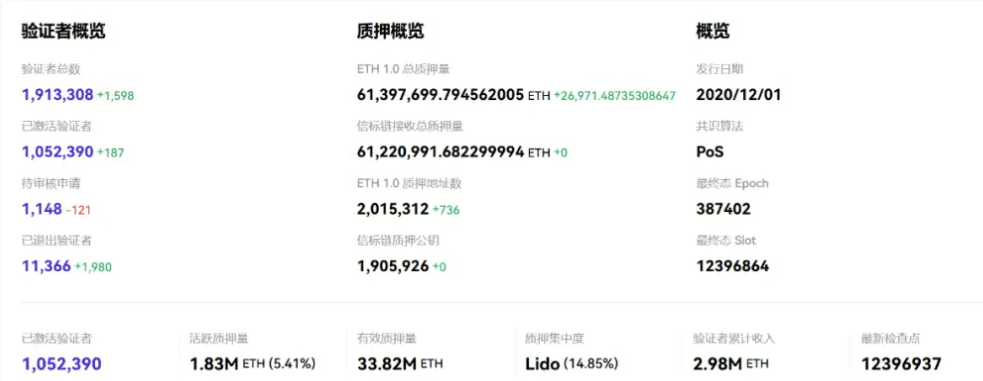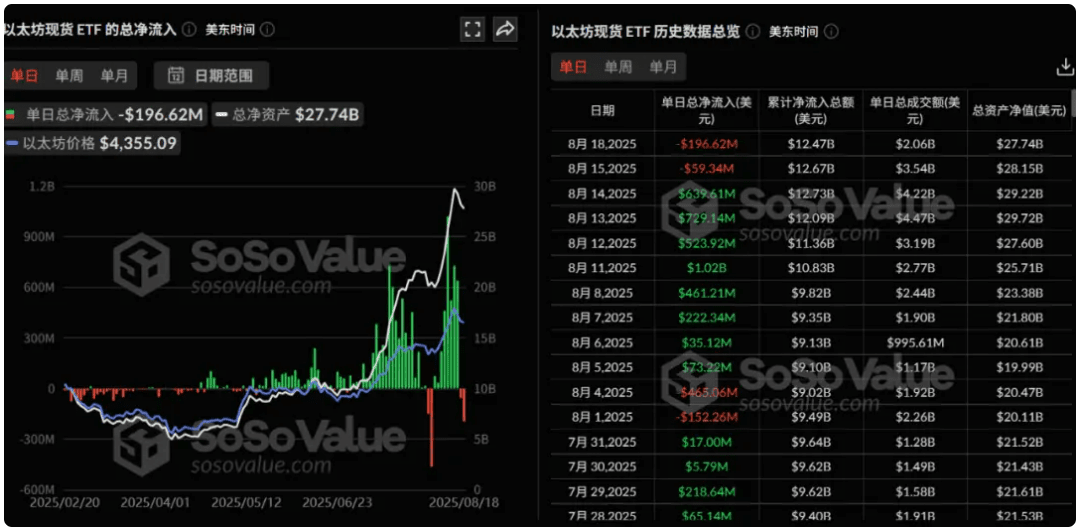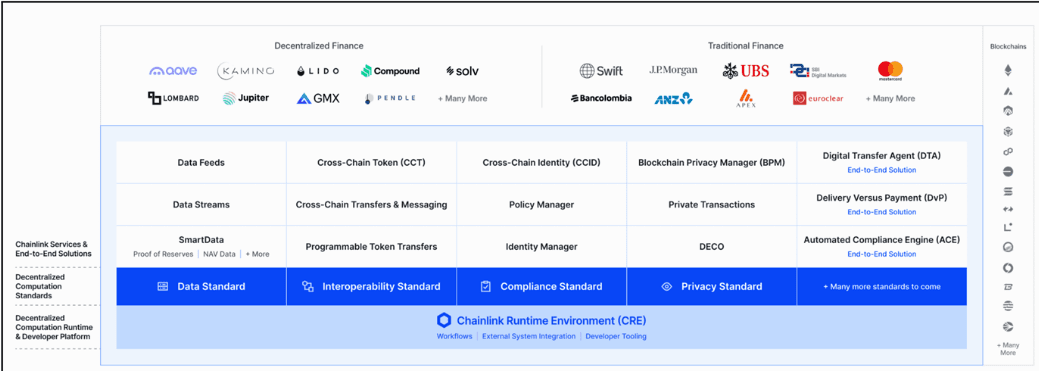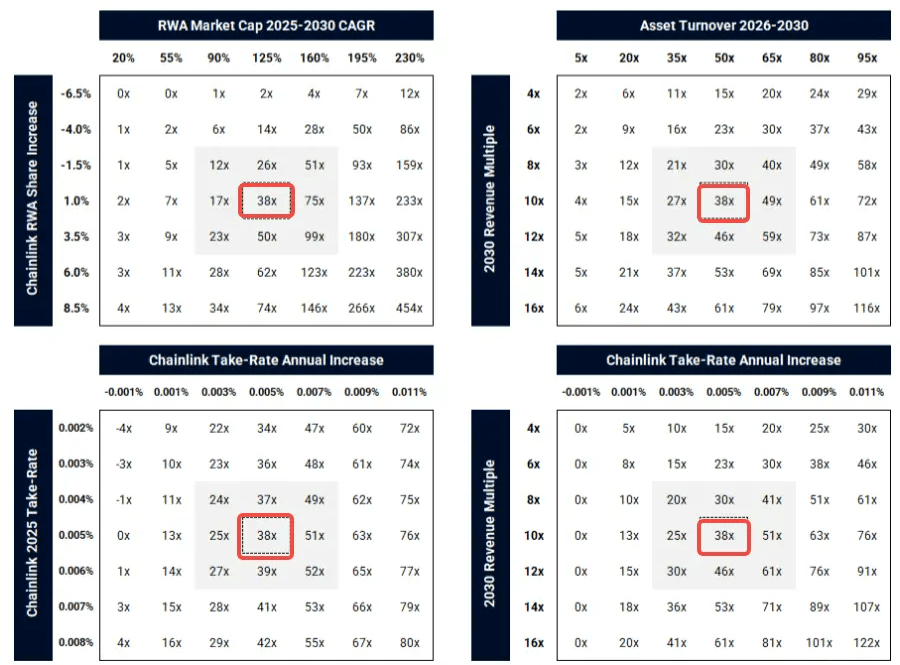Bull Market Starting Point: Institutional Funds are Reshaping the Crypto Market Landscape
Morgan Stanley's CIO notes that the sell-off in April 2025 marked the end of the last bear market, and the current crypto market has entered the early stages of a new bull market. Historical data shows that bull markets typically last 1-2 years, while the current market has only operated for 4 months, with limited pullback, indicating that investors still have opportunities to enter.

As sovereign funds and institutional capital accelerate their entry, core assets like Bitcoin and Ethereum are becoming key allocation focuses, with Ethereum's 'staking + ETF + corporate treasury' triple narrative forming resonance.
Ethereum: The Metamorphosis from Token to Financial Infrastructure
Staking Ecosystem: The Rise of On-Chain Interest Rate Anchors
As of August 2025, the amount of staked Ethereum surpassed 33.8 million (25% of total supply), with annual staking yields stabilizing at 3%-5%, viewed by some institutions as 'on-chain versions of government bond yields'.

Despite a short-term wave of unstaking in July (approximately 670,000 ETH pending), in the long run, the staking mechanism, through protocols like EigenLayer, creates a closed loop of 'staking - re-staking - protocol security', making ETH the underlying collateral of the Web3 financial system.

ETF Explosion: The Main Channel for Compliant Funds
Since the launch of the Ethereum spot ETF in the U.S. in July 2024, cumulative net inflows have reached $12.4 billion, accounting for 5.34% of Ethereum's market value.

On August 11, 2025, single-day net inflows exceeded $1 billion, with BlackRock and Fidelity absorbing over $900 million, marking a new phase of institutional allocation. ETFs not only reduce compliance friction but also shift ETH pricing power towards institutions through concentrated holdings (the top two hold 2/3 of the market).
Corporate Treasury: From Speculation to Strategic Reserves
U.S. publicly listed companies are massively allocating ETH. BitMine holds 1.523 million ETH (approximately $6.6 billion), and Cosmos Health has initiated a $300 million ETH reserve plan, achieving custody and staking through BitGo.

This trend differs from passive allocation in ETFs; companies will use ETH for cross-border payments, employee incentives, and other scenarios, endowing it with real settlement value.
Chainlink: The Undervalued Blockchain Middleware Monopolist
Fundamental Changes: From Oracles to Full-Stack Service Providers
Chainlink has built a full-stack ecosystem covering data, computation, cross-chain, compliance, and enterprise integration, serving $24 trillion in on-chain transactions, becoming core infrastructure for institutions like SWIFT and JPMorgan.

Its CCIP protocol enables cross-chain asset transfers, the ACE engine meets regulatory compliance needs, and the CRE environment bridges traditional and blockchain systems, forming a difficult-to-replicate technological moat.
Valuation Reconstruction: 20-30 Times Growth Potential
Currently, LINK's market value is only 1/15 of XRP, which has almost no actual institutional adoption.

If valued according to traditional financial companies (e.g., Visa's 10x price-to-sales ratio), Chainlink could achieve an $824 billion valuation in the 2030 tokenized asset market, corresponding to approximately $824 per LINK, representing a 38-fold potential compared to the current $22.

Recent Catalysts
LINK Reserve Mechanism: Corporate revenues automatically repurchase tokens, reversing selling pressure into buying.
Data Expansion: Supports real-time pricing for U.S. stocks and foreign exchange, integrating ICE data sources.
Privacy Upgrade: CCIP's private transaction and staking yield distribution mechanism enhance practicality.
Solana's TPS Arms Race: The Logic Behind Technological Breakthroughs
The Ideal vs. Reality of 11,000 TPS
Although 100,000 TPS was achieved in the mainnet test, it used noop operations (only verifying signatures), and the transaction byte size was far below normal levels. This data validates the network layer's limits more than the actual processing capacity at the application layer.
The Deeper Significance of Technological Upgrades
Frankendancer validators optimize through a high-frequency trading tech stack, enhancing node performance by 3-5 times; Alpenglow consensus upgrade moves voting transactions off-chain, freeing up 70% of block space, and reducing confirmation times to 150 milliseconds, aiming to achieve a DEX experience close to CEX. These improvements aim to address resource wastage caused by state competition and MEV bots.
Value Beyond TPS
Solana's core competitiveness lies in the diversity of the Firedancer client (similar to Ethereum's multi-client) and ecosystem activity. Although daily TPS remains at 3,000-4,000, technological upgrades lay the foundation for high-frequency trading in the future, avoiding a narrative purely based on performance competition.
Market Insights: Rebalancing Narrative and Fundamentals
Morgan Stanley points out that the current crypto market is in a transition phase from 'narrative-driven' to 'value-driven'. Ethereum solidifies its financial attributes through staking yields, compliant channels, and corporate applications, while Chainlink positions itself at the forefront of the tokenization wave with a full-stack ecosystem, and Solana reshapes scalability perceptions through technological iteration. Investors need to focus on projects with real utility (such as RWA, DePIN) and institutional backing, rather than relying solely on short-term speculation. As the Federal Reserve enters a rate-cutting cycle, the relative advantage of ETH staking yields will further emerge, and Chainlink's institutional collaborations may become the ignition point for the next market rally.



